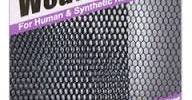Researchers from North Carolina State University have discovered a solution to stop electrical problems in yarns made to store electrical energy. The research could ultimately assist promote the creation of “smart textiles” that would harness energy from the wearer’s movements and power wearable devices and sensors.
By encircling the yarns with an insulating thread, the researchers reported in npj Flexible Electronics that they were able to prevent short-circuiting in yarns that serve as supercapacitors, which are electrical devices that store energy.
To ensure that the yarns could continue to function after going through the knitting and weaving processes, scientists also examined the strength and durability of the materials.
“A supercapacitor functions like a battery, but in this case, we’re working on a flexible battery shaped as a textile yarn that you could weave or knit into your T-shirt or sweater,” said Wei Gao, associate professor of textile engineering, chemistry and science and a University Faculty Scholar at NC State. “In this study, we have woven this yarn into a piece of fabric so that it can store electrical energy, and eventually we want to use it to power whatever electronic devices you need, whether it be a sensor, a light or even a cell phone.”
Although research into these so-called “yarn-shaped supercapacitors” is promising, experts claim that designers must deal with a persistent issue with their design: the supercapacitors’ propensity to short circuit grows with length.
A supercapacitor functions like a battery, but in this case, we’re working on a flexible battery shaped as a textile yarn that you could weave or knit into your T-shirt or sweater. In this study, we have woven this yarn into a piece of fabric so that it can store electrical energy, and eventually we want to use it to power whatever electronic devices you need, whether it be a sensor, a light or even a cell phone.
Professor Wei Gao
When an unanticipated path is taken by the electric current, short-circuiting occurs. Because a short circuit may generate a burst of heat energy or perhaps a fire, it is a safety risk.
“Everybody is trying to make smart electronics that can be incorporated into cloth or fabric,” Gao said. “What we found is if you try to make a supercapacitor yarn longer than 8 inches, it’s pretty easy for this device to short-circuit. It’s pretty dangerous, and it’s something nobody wants to encounter when wearing a smart suit.”
The researchers examined what would happen if they wrapped the super-capacitor yarn electrodes with insulating threads in order to address that issue. The concept was that the threads would serve as a physical barrier, preventing short-circuiting by preventing the opposing electrodes from coming into contact with one another.
They recorded the device’s current response while the electrodes were connected to a power supply to test the device’s functionality. The yarns’ capacity to maintain a charge was also put to the test. After charging and discharging the yarns 10,000 times, they discovered that 90% of the initial energy was retained.
The scientists also put their yarn-shaped supercapacitors to the test by weaving them into a fabric to determine if they could endure bending and stretching.
“The yarns need to be flexible and strong enough so that when you bend, stretch and press them, they keep their original electrical performance after all of those mechanical deformations,” said the study’s lead author Nanfei He, postdoctoral research scholar in textile engineering, chemistry and science at NC State. “The yarns all kept their original performance, even after going through weaving and knitting.”
Researchers said they made the yarn-shaped supercapacitor using processes that are conventional in textile manufacturing.
“All of these processes can be scaled up very easily,” He said.
In future work, the researchers want to incorporate their design into a garment, and to try to integrate it with other energy-generating devices.
“Materials innovation and process engineering are critical to the scalability and device performance,” said Feng Zhao, CEO of Storagenergy Technologies Inc., the industrial partner of the project. “We have developed a process to produce thousands of meters of high-performance yarns in a continuous manner.”
The study, “Separator Threads in Yarn-Shaped Super-capacitors,” was published online in npj Flexible Electronics. In addition to He and Gao, the other authors were Junhua Song, Jinyun Liao and Feng Zhao of Storagenergy Technologies Inc.
The study was supported by Storagenergy Technologies Inc., and funded by the United States Army under contract numbers W911NF19C0074 and W911NF18C0086.















